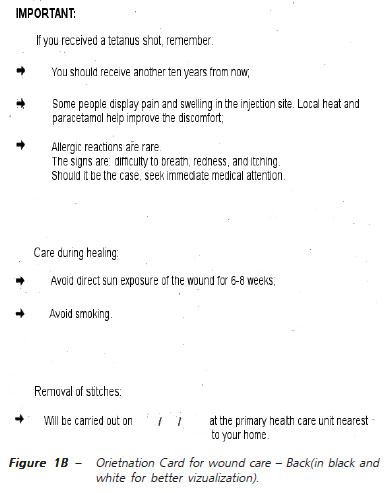Abstracts
OBJECTIVE: To determine whether the addition of discharge standard illustrated cards improves understanding of patients in the emergency room. METHODS: We conducted a prospective, randomized, interventional study with 228 patients discharged from the emergency department. All patients were interviewed and tested for the level of understanding of discharge instructions. Some of them received the intervention, with the standard cards, and another did not, constituting the control group. RESULTS: The average of followed discharge guidelines of the group that received the cards was higher than the control group, with statistical significance (p=0.009). When segregated by age, the group between 16 and 35 years of both sexes had the best average of followed guidelines, statistically, than the average of the control group (p=0.01). The difference between the mean orientations between the control group and the card for patients undergoing procedures was statistically significant (p=0.02); as for the stratification according to the number of procedures, the significance increases when that is equal to 1 (p=0.001) and decreased the more procedures were carried out. CONCLUSION: The introduction of discharge standard orientation cards was associated with improvement in the understanding of patients. Without replacing the verbal directions, which establishes dialogue and doctor-patient bonding, cards appear as auxiliary elements, facilitating understanding and care guidelines.
Patients; Wounds and injuries; Emergency medical services; Comprehension; Patient discharge

 Guidelines for discharge: do standardized cards help in patient understanding?
Guidelines for discharge: do standardized cards help in patient understanding?




